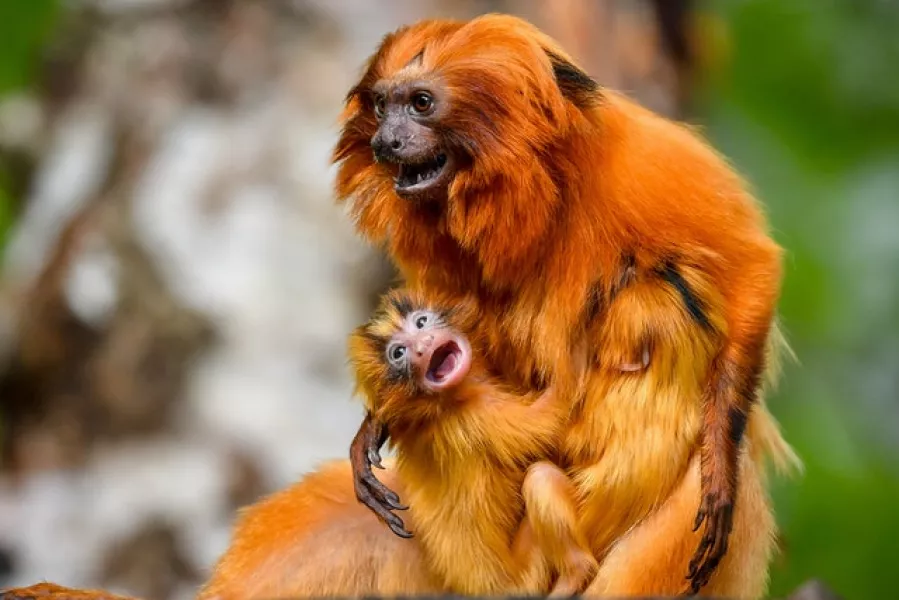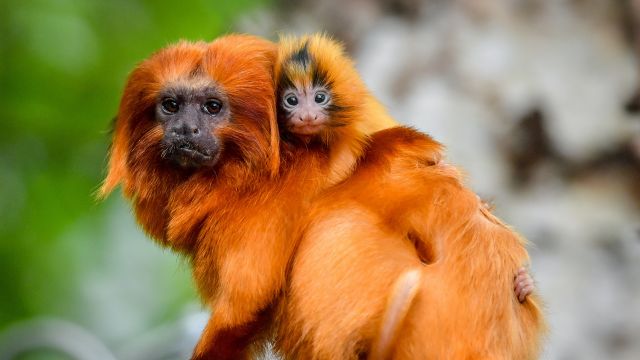The tiny babies, who weigh just 50g each, arrived on one of the hottest nights of the year when temperatures remained at more than 20C.
But the pair, who live with their mother Missy and father Dourado at Bristol Zoo, are thriving.

The zoo’s mammals team leader, Shani Ratnayake, said: “They are really doing well, suckling and growing strong.”
She said the other grown-up golden lion tamarins in the six-strong group were taking turns to help look after the new arrivals.
“They are helping to carry them around and take them back to their mum when they want to feed. It’s good experience for them all.”
Missy has given birth to twins four times, but this is the first pair where both infants have survived.
Ms Ratnayake said: “She has been nibbling their tails, but this is quite common behaviour for golden lion tamarins.”
The birth is important because the twins are part of a vital European breeding programme to help protect the species.
It will be some time before keepers at the zoo are able to tell the sex of the babies, and a year before they are fully grown.
They are currently just 10cm (4ins) long, including their tails.
Golden lion tamarins are named after their miniature lion-like manes and live in trees foraging on invertebrates and fruits. They also eat tree sap.
As well as a beautiful baby gorilla, we're so pleased to announce we've also welcomed two golden lion tamarin twins! 😍
The pair, who live with their mum Missy and dad Dourado, in the heart of the Zoo, are thriving. Find out more:https://t.co/RI4DnxkDb2
📸 by Miriam Haas. pic.twitter.com/6HWLnNQdrm— Bristol Zoo Gardens (@BristolZooGdns) August 20, 2020
Brazil’s Atlantic coastal forests where they are found are disappearing due to logging, agriculture and industry, which puts the future of the species at risk.
But thanks to zoos, golden lion tamarins have become one of the world’s major conservation success stories.
They were down-listed from critically endangered to endangered on the International Union for Conservation of Nature Red List as a result of 30 years of conservation efforts.
About a third of the current wild population of this species are descendants of zoo-born animals that were reintroduced into their native habitat in the early 1990s.







